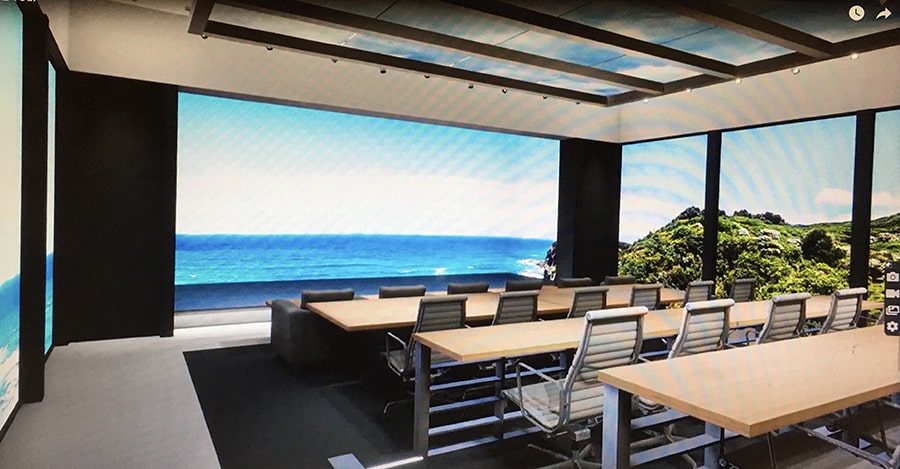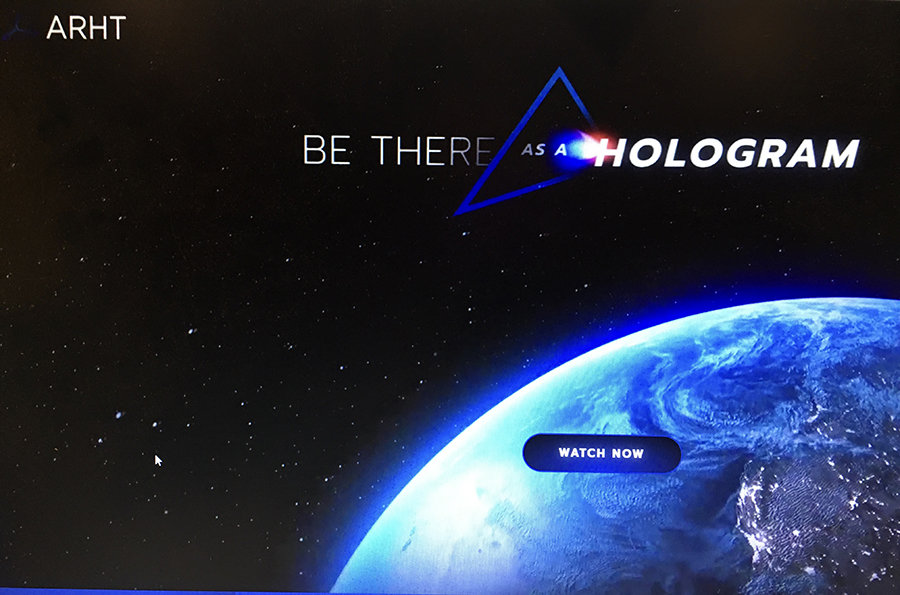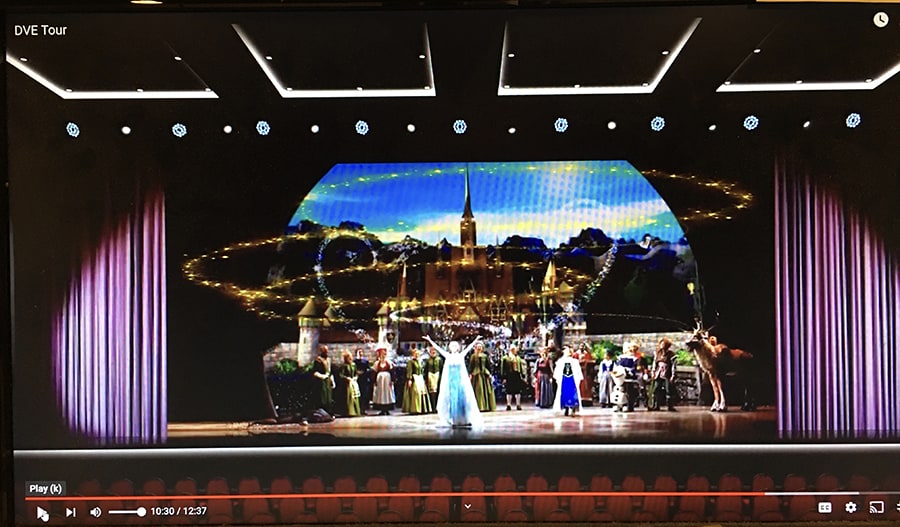Presence or Virtual Presence: That is the Question
The ultimate success of any new technology in the marketplace has historically challenged inventors to create regular upgrades. Faster, more user friendly and as universally usable across a broad variety of current and future platforms, are key. Increases in internet access speed, monitor display resolution and computer/smartphone processing efficiency are critical building blocks in this evolution.

During the current pandemic era, additional social factors have influenced the direction of, and urgency of technological research. Besides the discomforts and rules of public gathering, the COVID-19 pandemic has caused an increased reluctance in traveling and public transportation, especially for long distance air travel. Together these trends have been the primary forces in fueling developments in virtual travel.
As we all know from our recent daily lives, one of the most successful of such ventures has been “Zoom” by Zoom Video Communications. Zoom or Zooming (now both a noun and a verb) is staying put, while at the same time, “being somewhere else” with others most anywhere on earth, as long as, they have decent internet access. With its“killer app” and its free-of-charge for basic use business model, Zoom has experienced a meteoric rise in acceptance as the standard for virtual visits. Even this incredible achievement is subject to technological one upmanship. The Zoom experience is in two dimensions. Imagine a similar experience in 3-D, a concept being developed using holography.
Believe it or not, holography has existed since 1948. Many of us may remember the small reflective discs we carried in our pockets in our youth. In recent years, 3D holography has primarily been used for advertising installations with dramatic, attention-getting displays, with research emphasis on achieving life-size capability. Companies including JEEP, BMW, Coca-Cola, AVON, Adidas and Volkswagen have invested heavily in the potential of holography.
Science fiction (think: Twentieth Century-Fox’s 1958 “The Fly”) and the human imagination have inspired a current group of entrepreneurs to take holography to the next level…teleportation of individuals using the most up to date capabilities of the internet.

Each company involved in the evolution of human teleportation, like DVE Holographics of Irvine, California, has its own idea about the future. According to DVE, their “Telepresence Huddle Room” based on an ingenious glass image panel which creates “an immersive, life-size” meeting experience without the need for physical travel, has been a runaway success. The company recently introduced the “Holo-Office”, “Holo-Room” and “Holo-Podium”, each enabling virtual “Telepresence” most anywhere on earth. DVE has demonstrated “live” stage shows that could be shared at multiple locations worldwide simultaneously.
ARHT Media of Toronto has developed a clever business model. Using their “HoloPresence“ technology, ARHT has combined with WeWork and its worldwide network of over 800 flexible work space locations, to offer 100 locations for virtual meetings by the end of 2022, with many more to follow.

The future of holographic “travel” is only limited by the human imagination. For the real estate industry, for example, it could mean touring properties “live” with clients without having to physically travel. This would allow for a geometric increase in number of showings per day. Stay Tuned.










!['The Maples' is a prestigious generational compound of two extraordinary estates: 18 Maple and 22 Maple. This rare offering, designed by luxury architect Lissoni partners New York and developed by visionaries Alessandro Zampedri-CFF Real Estate and JK Living, redefines opulence with the highest quality of craftsmanship and captivating views of the Atlantic Ocean. Represented by @nycsilversurfer and @challahbackgirl of @douglaselliman. [link in bio]](https://hamptonsrealestateshowcase.com/wp-content/uploads/sb-instagram-feed-images/438891010_1083749139481747_7890082604579275354_nfull.jpg)
![Featuring 360-degree water views on Mecox Bay, the Atlantic Ocean and Channel Pond, 1025 Flying Point offers the ultimate beach cottage that is flooded with natural light. With panoramic views, proximity to the ocean, and a private walkway to Mecox bay for kayaking or paddle boarding, this truly is a special retreat. Represented by @ritcheyhowe.realestate and @hollyhodderhamptons of @sothebysrealty. [link in bio]](https://hamptonsrealestateshowcase.com/wp-content/uploads/sb-instagram-feed-images/438994305_737511778456166_4602476013493875279_nfull.jpg)
![Attention advertisers! 📣 Secure your spot in the highly anticipated Memorial Day edition #HRES. Reach thousands of potential clients and showcase your brand in one of the most sought-after publications in the Hamptons, NYC, Palm Beach, and beyond. Contact us now to reserve your ad space! [link in bio]](https://hamptonsrealestateshowcase.com/wp-content/uploads/sb-instagram-feed-images/438549843_275102939023235_6718257301437562124_nfull.jpg)
![You eat with your eyes, and on the East End, it’s important that what you eat looks just as good as how it tastes. At @rosies.amagansett, the restaurant itself is plenty photo-worthy with blue ceramic tiling and yellow and white striped fabric wallpaper. But for a dish that will light up your photos, head directly to the salmon tartare! [link in bio]](https://hamptonsrealestateshowcase.com/wp-content/uploads/sb-instagram-feed-images/437094269_7296727147115953_1594410326824303644_nfull.jpg)

![We were honored to be the media sponsor for @blackmountaincapital's open house event with @jameskpeyton and @jfrangeskos at 11 Dering Lane in East Hampton! Other sponsors included @landrover, Feline Vodka, @rustikcakestudio, @la_parmigiana, @lahaciendamexicangrill11968, @homesteadwindows, Stone Castle, @talobuilders, and @thecorcorangroup.
A big thank you Carrie Brudner of Black Mountain Capital for putting together this fabulous event! [link in bio]](https://hamptonsrealestateshowcase.com/wp-content/uploads/sb-instagram-feed-images/437081213_762912965932136_6847332836522786568_nfull.jpg)

![Blooms Galore at the Long Island Tulip Festival! 🌷✨ Mark your calendars for April 15th as the vibrant tulips at @waterdrinkerlongisland burst into full bloom! Enjoy a day filled with colorful splendor, food trucks, live music, and more. [link in bio]](https://hamptonsrealestateshowcase.com/wp-content/uploads/sb-instagram-feed-images/437083429_974242677583725_6855805712693638343_nfull.jpg)
